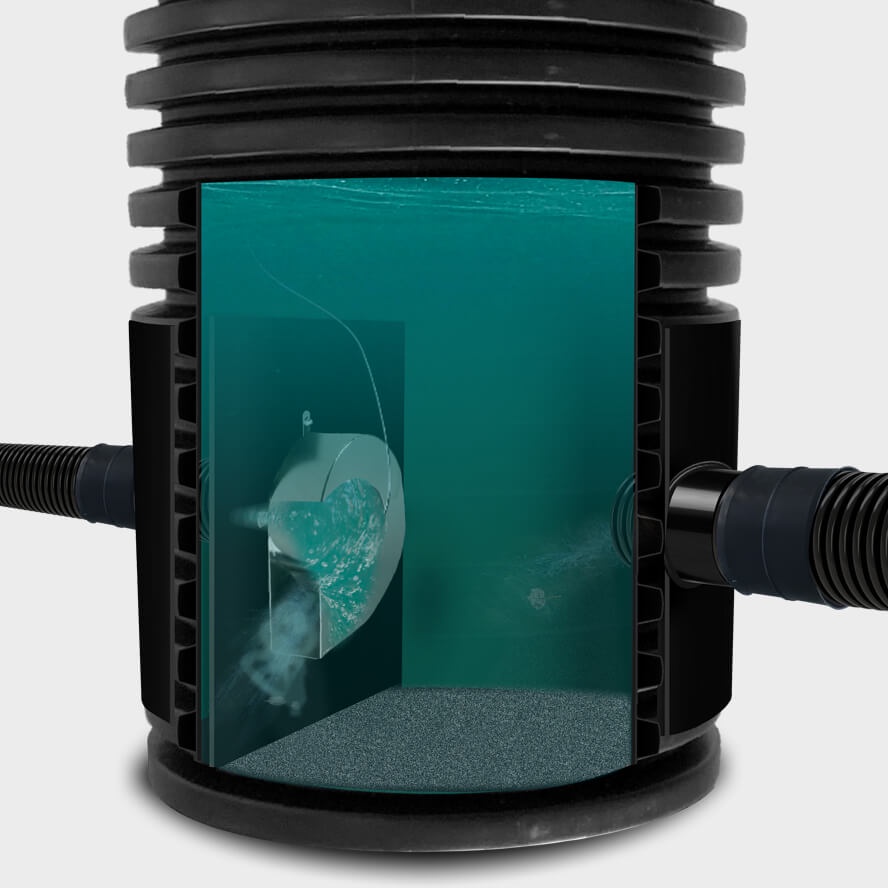In today's era of environmental consciousness, the quest for sustainable solutions is paramount across various sectors. When it comes to managing stormwater runoff effectively, especially in urban areas, traditional methods often fall short in terms of efficiency and environmental impact. This is where innovative technologies like Vortex Flow Control Systems come into play, offering a blend of efficiency, reliability, and eco-friendliness.
Understanding Vortex Flow Control Systems
Vortex flow control systems are ingeniously designed structures used in stormwater management to regulate flow rates and prevent flooding in drainage systems. They utilize the principle of vortex shedding, where swirling flow patterns are induced to control the rate of water discharge. Unlike conventional flow control devices, such as weirs or orifice plates, vortex systems offer distinct advantages in terms of performance and adaptability.
Advantages of Vortex Flow Control Systems
-
Efficiency: Vortex systems efficiently regulate flow rates across a wide range of conditions, ensuring optimal performance during both low and high-flow scenarios. This adaptability is particularly crucial in urban environments, where stormwater runoff varies significantly due to factors like rainfall intensity and land use.
-
Sustainability: By effectively managing stormwater runoff, vortex flow control systems help mitigate the adverse impacts of urbanization on natural water systems. They minimize erosion, reduce pollutant loads, and promote groundwater recharge, thereby contributing to the overall sustainability of urban ecosystems.
-
Cost-effectiveness: Despite their advanced technology, vortex flow control systems offer long-term cost savings compared to traditional drainage solutions. Their durable construction and minimal maintenance requirements translate into lower lifecycle costs, making them a cost-effective investment for municipalities and developers.
-
Versatility: Vortex flow control systems can be customized to suit the specific requirements of different applications, from residential developments to industrial complexes. They are available in various configurations, including inline and offline designs, allowing engineers to tailor solutions that best fit the site conditions and hydraulic demands.
-
Environmental Compliance: With growing regulatory pressures aimed at reducing stormwater pollution and improving water quality, vortex flow control systems offer a proactive approach to compliance. By capturing and treating runoff before it enters natural water bodies, these systems help meet stringent environmental standards and protect sensitive ecosystems.
-
Resilience: In the face of climate change and increasingly frequent extreme weather events, the resilience of stormwater infrastructure is more critical than ever. Vortex flow control systems enhance the resilience of urban drainage networks by preventing flooding and minimizing the risk of infrastructure damage, thereby ensuring continued functionality under challenging conditions.
Applications of Vortex Flow Control Systems
-
Urban Developments: Vortex flow control systems are ideal for managing stormwater runoff in urban developments, including residential neighborhoods, commercial complexes, and industrial parks. They help alleviate pressure on existing drainage infrastructure and promote sustainable urban planning practices.
-
Transportation Infrastructure: Highways, railways, and airports are susceptible to flooding and erosion caused by intense rainfall and surface runoff. Vortex flow control systems can be integrated into transportation infrastructure to mitigate these risks and ensure the safety and reliability of critical transportation networks.
-
Green Infrastructure Projects: As cities embrace green infrastructure initiatives to enhance resilience and promote environmental sustainability, vortex flow control systems play a crucial role in supporting these efforts. They complement green infrastructure practices such as rain gardens, bioswales, and permeable pavements by managing runoff at source and reducing reliance on centralized drainage systems.
Conclusion
In conclusion, vortex flow control systems represent a paradigm shift in stormwater management, offering a holistic approach that balances performance, sustainability, and resilience. By harnessing the power of vortex technology, these systems provide efficient and environmentally friendly solutions to the challenges posed by urbanization and climate change. As cities continue to evolve, embracing innovative technologies like vortex flow control systems will be instrumental in creating more resilient and livable urban environments for generations to come.
Visit FreeFlush to explore our range of vortex flow control solutions and discover how they can transform your stormwater management practices.


No comments yet